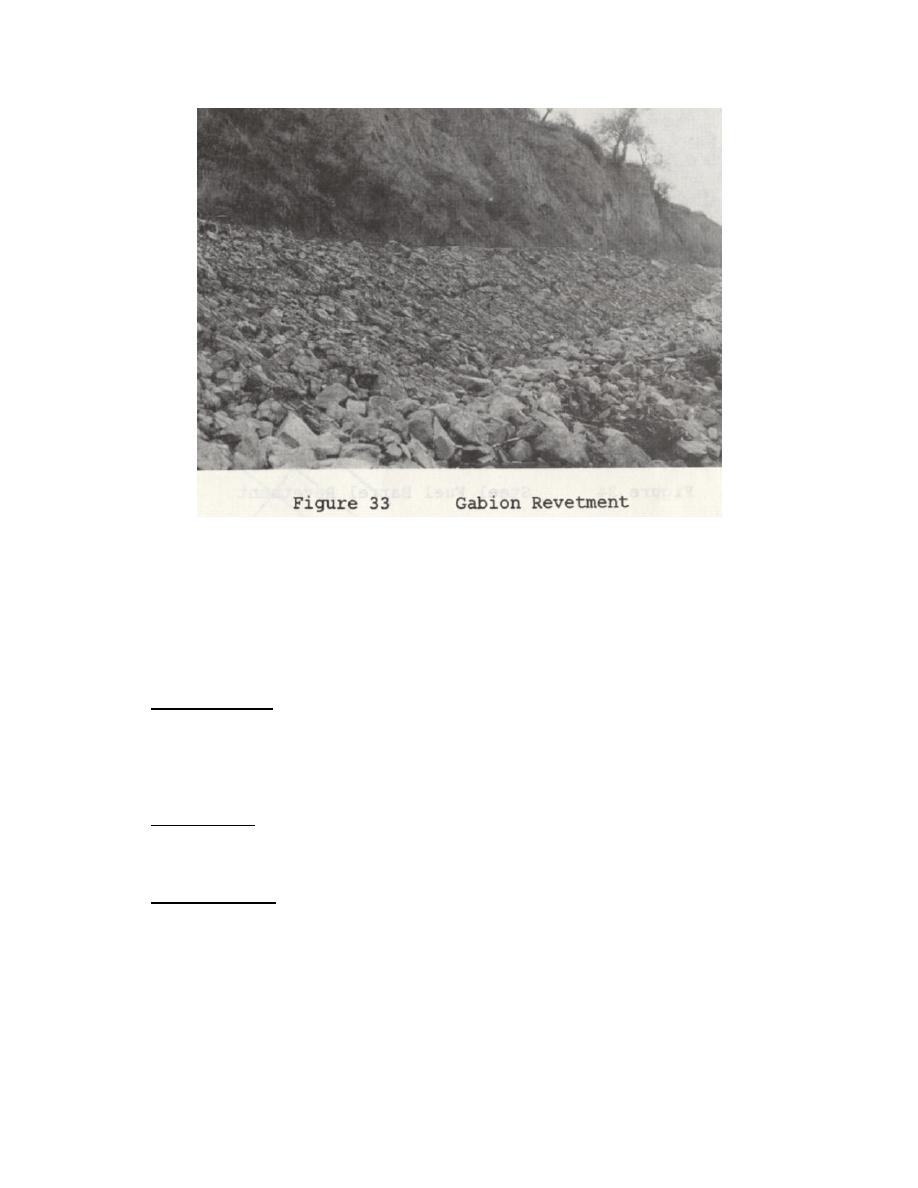
The disadvantage of a gabion structure is that the baskets may open under heavy wave action.
They should not be used where action by water-borne debris or cobbles is present. Also, since structural
performance depends on the wire mesh, abrasion and damage to the PVC coating can lead to rapid
corrosion of the wire and failure of the basket. For that reason, the baskets should be tightly packed and
periodically refilled to minimize movement of the stone and subsequent damage to the wire. Rusted and
broken wire baskets also pose a safety hazard where traffic across them is required. Gabion structures
require periodic inspections so that repairs are made before serious damage occurs.
Steel Fuel Barrels. This type of revetment is limited to areas such as remote arctic regions where
corrosion rates are slow and there is an abundance of used fuel barrels of little salvageable value (Figure
34). The barrels should be completely filled with coarse granular material to preclude damage by floe ice
and debris, and seaward barrels must be capped with concrete. In addition, all barrels should be partially
buried to increase stability.
Concrete Slabs. Structures of this type have failed due to improper filtering, inadequate toe
protection, and lack of flank protection. Placed on a flatter slope and with due regard for proper design
considerations, they can provide low cost protection when large slabs are available.
Fabric and Ballast. Revetments using a fabric filter cloth as the slope's armor layer and held in
place by some form of ballast have not been successful and are not recommended.
42



 Previous Page
Previous Page
